How to Grow and Care for Orange Trees: Pro Tips for Lush Growth
- May 21, 2024
- 0 comment
Learn how to grow and care for orange trees with our pro tips on planting, watering, and maintenance for lush growth. Orange trees are not only beautiful but also bountiful, providing fragrant blooms and juicy fruits. Whether you’re a novice gardener or a seasoned grower, our guide will walk you through the essential steps to ensure your orange trees thrive.
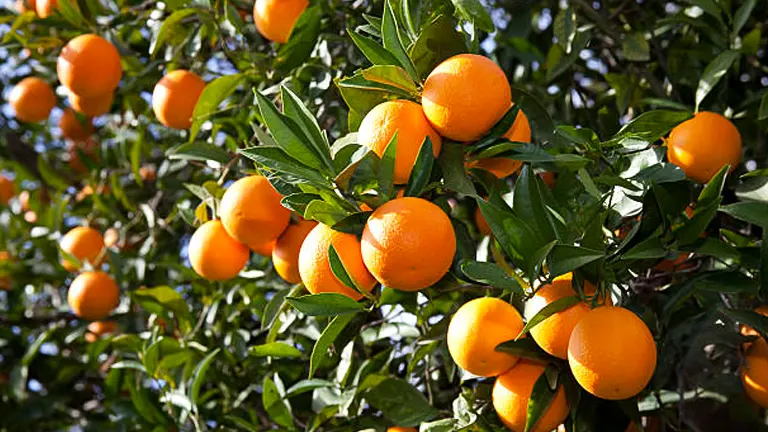
From selecting the right variety to mastering the art of pruning and fertilization, discover professional tips that promise lush, vibrant growth.
Table of Contents
- Overview of Orange Trees
- Choosing the Right Orange Tree Varieties
- Site Selection and Preparation
- Planting Techniques
- Watering and Nutritional Needs
- Pruning and Maintenance
- Pest and Disease Management
- Harvesting and Storage
- Troubleshooting Common Issues
- Conclusion
- FAQs
Overview of Orange Trees

Orange trees, scientifically known as Citrus sinensis, are part of the Rutaceae family, which encompasses all citrus fruits. This genus is highly valued not only for its edible fruits but also for its ornamental beauty. Orange trees can reach heights of up to 30 feet in their natural habitat but are often kept smaller (around 15-20 feet) in cultivated environments through pruning and cultivation techniques.
While orange trees predominantly thrive in subtropical and tropical climates, they exhibit remarkable adaptability. They require temperatures between 55°F and 100°F, with optimal fruit production achieved in temperature ranges from 65°F to 95°F. Frost is a significant threat, as temperatures below 28°F can damage the trees, especially younger ones.
The growth and fruit-bearing timeline of an orange tree is an important consideration for growers:
- Juvenile Phase: Typically lasts 3-5 years, during which the tree matures but does not produce fruit.
- Fruit-Bearing Phase: Begins as the tree matures, with peak productivity from 10 to 20 years of age, after which it can gradually decline if not properly maintained.
Varietal Differences and Their Impact
Dwarf varieties, such as the popular ‘Dwarf Washington Navel’, allow for container growth and are ideal for those with limited space. These variants generally grow to about 6-10 feet tall and can even be grown indoors with sufficient light.
Key Orange Tree Varieties and Characteristics
| Variety | Height | Climate Preference | Fruit Characteristics | Ripening Season |
|---|---|---|---|---|
| Washington Navel | 10-20 ft | Subtropical | Seedless, sweet, peels easily | Winter |
| Valencia | 15-30 ft | Tropical/Subtropical | Juicy, few seeds, excellent for juice | Late spring |
| Blood Orange | 12-25 ft | Mediterranean | Red flesh, distinct raspberry-like flavor | Winter |
| Dwarf Washington Navel | 6-10 ft | Suitable for containers | Seedless, sweet, good for eating | Winter |
Botanical Features
Orange trees are fascinating from a botanical perspective. Their leaves are rich in aromatic oils, which can be sensed when brushed or crushed. The flowers, known as orange blossoms, are not only beautiful but are highly aromatic and have been used historically in bridal bouquets and perfumes. The fruit itself is a hesperidium, a type of berry with a leathery rind and spongy interior, which is botanically distinct from simple fruits.
Choosing the Right Orange Tree Varieties
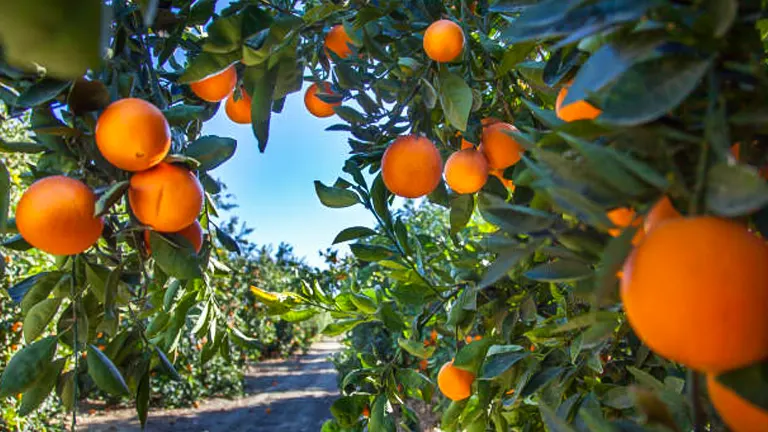
Selecting the right variety of orange tree is crucial for successful cultivation, as each variety has specific climatic preferences and growth characteristics. Genetic diversity among orange trees allows for a wide range of adaptability to different environmental conditions, making it important to choose a variety that aligns with the local climate and soil conditions.
Detailed Variety Profiles
- Valencia Oranges: Known for their lengthy harvesting window, Valencia oranges are prized for their exceptionally sweet and abundant juice, making them a top choice for commercial juice production. They flourish in warm climates with mild winters, requiring a temperature range of 65°F to 85°F for optimal growth and fruit production.
- Navel Oranges: Characterized by their “navel” at the non-stem end, these oranges are seedless, easy to peel, and known for their rich, sweet flavor, making them ideal for fresh consumption. Navel oranges prefer cooler winter climates and are frost-tolerant to some extent, making them suitable for a broader range of temperate areas.
- Blood Oranges: Distinct for their deep red flesh and a flavor profile that combines traditional citrus with a hint of raspberry, blood oranges are highly valued for both culinary and beverage uses. They thrive best in Mediterranean-like climates but are versatile enough to adapt to varying conditions with careful management.
Climatic Suitability and Fruit Characteristics
When choosing an orange tree variety, consider factors like the local climate compatibility, soil type, and the desired use of the fruit—whether for juicing, fresh eating, or culinary purposes. Additionally, consider the tree’s resistance to common diseases and pests prevalent in your area.
Comparative Analysis of Popular Orange Varieties
| Variety | Ideal Climate | Fruit Characteristics | Harvest Season | USDA Hardiness Zones |
|---|---|---|---|---|
| Valencia | Warm, mild winters | Very sweet, high juice content | Late spring to summer | 9-11 |
| Navel | Cooler winters | Sweet, seedless, easy to peel | Winter | 8-11 |
| Blood Orange | Mediterranean-like | Red flesh, raspberry-like flavor | Winter | 9-11 |
It’s also important to consider the growth cycle and maintenance requirements of the variety. Some varieties may require more intensive care and pest management strategies than others. Additionally, the tree’s mature size and root system should match the planting space available, especially in urban or residential settings.
Site Selection and Preparation
Choosing the Ideal Location
Selecting the right location is essential for the health and productivity of your orange trees. These trees thrive in full sun, requiring at least six hours of direct sunlight daily to effectively photosynthesize and produce fruit. Moreover, they need shelter from strong winds, which can cause physical damage to branches and foliage, and disrupt the microenvironment around the trees, leading to increased evapotranspiration and potential stress.
Microclimate Considerations
It’s also beneficial to consider microclimate effects such as elevation and nearby structures, which can modify temperatures and light exposure. For instance, planting near a south-facing wall can provide additional warmth and protection in cooler climates, extending the growing season.
Soil Requirements
Orange trees flourish in well-drained, loamy soils with a pH between 6.0 and 7.5. Achieving the right soil pH is crucial as it affects nutrient availability and root health. Testing soil pH before planting allows for adjustments using lime (to increase pH) or sulfur (to decrease pH). Amending the soil with organic compost not only improves soil fertility and structure but also enhances microbial life essential for nutrient uptake.
Soil Composition and Health
The ideal soil for orange trees should have good loaminess, indicating a balance of sand, silt, and clay, along with organic matter. This texture ensures adequate water retention while allowing excess water to drain, preventing root rot.
Preparing the Planting Site
Start by clearing the planting area of weeds and debris that compete for nutrients and water. Proper spacing is crucial when planting multiple trees: approximately 15 to 20 feet apart for standard varieties and 8 to 12 feet for dwarf varieties. Adequate spacing is vital for air circulation and sunlight penetration, both of which are instrumental in disease prevention and uniform fruit development.
Ideal Planting Conditions for Orange Trees
| Factor | Ideal Condition | Purpose and Benefit |
|---|---|---|
| Sunlight | Minimum 6 hours of direct sunlight daily | Essential for photosynthesis and fruit production |
| Wind Protection | Sheltered locations or windbreaks | Prevents physical damage and reduces moisture loss |
| Soil Type | Well-drained, loamy | Supports root growth and prevents waterlogging |
| Soil pH | 6.0 to 7.5 | Optimizes nutrient availability and root health |
| Spacing | 15-20 feet apart for standard trees, 8-12 feet for dwarfs | Ensures adequate air circulation and sunlight exposure |
Planting Techniques
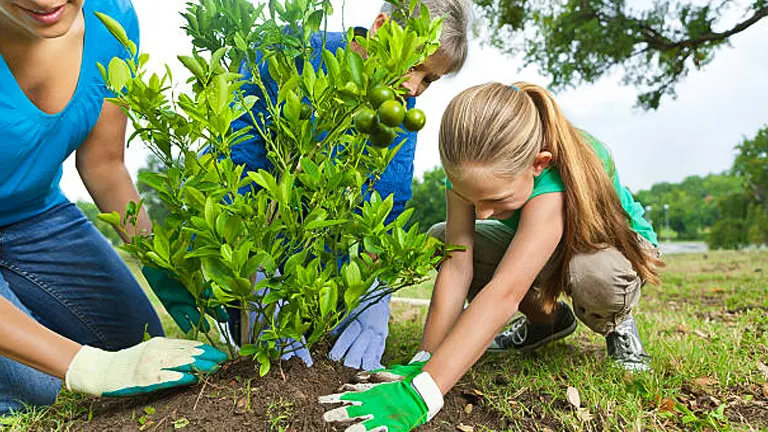
The timing of planting orange trees is crucial for their survival and growth. In colder regions, the optimal time is in the spring, just after the last frost, when the soil is warming up. This allows the tree to establish its root system in moderate temperatures. In warmer climates, planting in the fall is ideal, as the cooler temperatures allow roots to establish without the stress of summer heat.
Detailed Planting Instructions
- Preparing the Hole: Dig a hole that is twice as wide as the root ball but only as deep as the root ball itself. This ensures that the tree is planted at the correct depth, which is vital for proper root development. Planting too deep can lead to waterlogging and root rot, while too shallow planting can expose roots to drying and damage.
- Positioning the Tree: Carefully place the tree in the center of the hole. It is important to spread the roots outward and downward to encourage outward growth and stability. The root collar (where the roots flare from the trunk) should be just above the soil level to prevent issues like stem rot.
- Backfilling: Fill the hole with a mix of native soil and well-decomposed organic compost. This enhances the soil structure, providing better aeration and drainage. Lightly tamp the soil as you backfill to remove air pockets which can dry out roots and destabilize the tree.
- Watering: Immediately after planting, water the tree thoroughly to settle the soil around the roots. This initial watering is crucial to ensure close contact between the roots and the soil, which aids in the absorption of water and nutrients.
- Initial Care: Apply a layer of organic mulch around the base of the tree to help retain soil moisture and regulate soil temperature. The mulch should be kept a few inches away from the trunk to avoid moisture buildup against the bark, which can lead to diseases.
Watering and Nutritional Needs
Watering Requirements
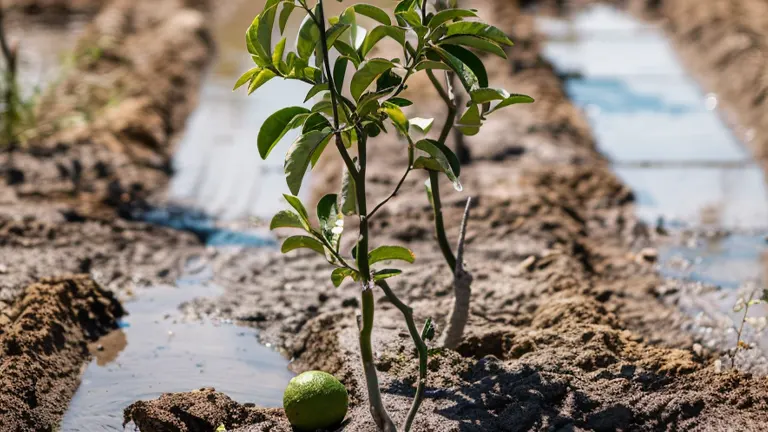
Proper watering is crucial for the health of orange trees, especially during their formative years and periods of drought. Here are detailed guidelines:
- Young Trees: In the first few years after planting, orange trees need consistent moisture. Water young trees once or twice a week, adjusting based on rainfall, temperature, and soil type. The goal is to ensure that water reaches deep into the soil, about 24 inches down, to encourage roots to grow downward.
- Mature Trees: Once established, orange trees require less frequent but deeper watering. This promotes resilience in the root system and helps the tree withstand periods without rain. Water mature trees every two to three weeks, more often in hot, dry conditions.
Monitoring Soil Moisture
Use a soil moisture meter or check the soil moisture manually by digging a small test hole. It’s important to allow the top few inches of soil to dry out between waterings to prevent overwatering and root rot.
Fertilization Strategy
Orange trees, being heavy feeders, require a well-balanced nutritional regimen to thrive and produce fruit. Here’s a breakdown of the essential nutrients and their roles:
- Nitrogen (N): Crucial for leaf and branch growth. It should be applied carefully, as too much can promote foliage at the expense of fruit.
- Phosphorus (P): Supports root development and flowering.
- Potassium (K): Vital for fruit quality and disease resistance.
- Micronutrients: Elements like magnesium (Mg) and zinc (Zn) are essential for photosynthesis and overall plant health.
Fertilization Schedule
Apply a balanced citrus-specific fertilizer with N-P-K and micronutrients in late winter to prepare for spring growth, and again in early summer to support fruit development. Use slow-release formulas to provide a steady supply of nutrients.
Essential Watering and Feeding Schedule for Orange Trees
| Tree Age | Watering Frequency | Fertilizer Application Timing | Key Nutrients |
|---|---|---|---|
| Young | Weekly (adjust per conditions) | Late winter, early summer | High nitrogen content |
| Mature | Every 2-3 weeks (adjust per conditions) | Late winter, early summer | Balanced N-P-K, micronutrients |
Advanced Tips:
- Mulching: Apply organic mulch around the base of the tree to help retain soil moisture and suppress weeds, which compete for nutrients.
- Leaf Analysis: Consider conducting a leaf analysis every few years to precisely tailor your fertilization strategy based on the actual nutrient uptake of your trees.
Pruning and Maintenance
Pruning Objectives
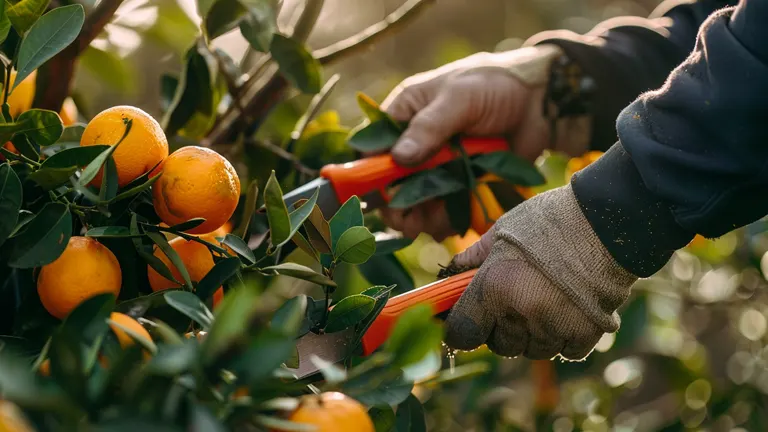
Pruning is essential for the overall health and productivity of orange trees. Proper pruning promotes healthy growth, shapes the tree, and enhances fruit quality. Here are detailed objectives and guidelines:
- Timing: The optimal time to prune orange trees is after harvest in late winter or early spring, before the new growth starts. This timing minimizes stress on the tree and allows for robust growth during the growing season.
- Removing Dead or Diseased Branches: Cut away any dead, diseased, or damaged branches to prevent the spread of disease and pests.
- Thinning Dense Areas: Thin out overly dense areas to improve air circulation within the canopy. This reduces the risk of fungal infections and ensures sunlight penetrates to all parts of the tree.
- Cutting Back Low Limbs: Remove limbs that are dragging on the ground or touching other structures to prevent damage and facilitate easier maintenance and harvesting.
Pruning Techniques
- Heading Cuts: These are used to shorten a branch or shoot, promoting dense growth and a bushier appearance.
- Thinning Cuts: These remove an entire branch or shoot back to its point of origin, which opens up the canopy and improves air flow.
Maintenance Tips
Regular maintenance is crucial to keep your orange trees healthy and productive. Here are some key practices:
- Pest and Disease Inspection: Regularly inspect trees for signs of pests like mites, aphids, and scale, as well as diseases like citrus greening and canker. Early detection and treatment are critical.
- Sanitation: Keep the area around the trees clean. Remove fallen leaves and fruit to prevent the buildup of pests and diseases.
- Mulching and Weeding: Apply mulch around the base of the tree to retain moisture and suppress weeds, which compete for nutrients and water.
Pruning and Maintenance Guidelines
| Activity | Timing | Purpose | Tools Needed |
|---|---|---|---|
| Pruning | Late winter/early spring | Remove dead/diseased branches, improve air circulation | Pruning shears, saw |
| Pest Inspection | Monthly | Early detection and treatment of pests | Magnifying glass, gloves |
| Disease Inspection | Monthly | Prevent spread of diseases | Disinfectant, gloves |
| Sanitation | Ongoing | Reduce pest and disease habitat | Rake, compost bin |
| Mulching | Spring and fall | Retain soil moisture, suppress weeds | Mulch, shovel |
Advanced Tips:
- Sanitizing Tools: Always disinfect pruning tools before and after use to prevent the spread of diseases. A solution of 10% bleach or 70% alcohol works well.
- Proper Cuts: Make clean cuts at a slight angle to promote quick healing and reduce the risk of disease entry.
- Tree Health Monitoring: Keep detailed records of pruning activities and tree health status to identify patterns and adjust care practices accordingly.
Pest and Disease Management
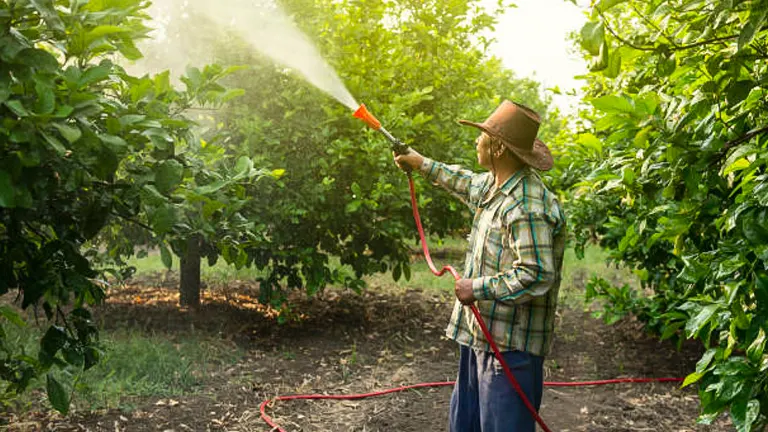
Orange trees are vulnerable to various pests and diseases, which can significantly impact their health and fruit production. Here’s a more detailed look:
- Aphids: These small sap-sucking insects can cause leaf curling and stunted growth. They also excrete honeydew, which encourages sooty mold growth.
- Citrus Mites: Tiny arachnids that feed on leaves and fruits, causing speckled discoloration and affecting overall tree vigor.
- Scale Insects: Hard or soft-bodied insects that attach to stems and leaves, sucking the sap and weakening the tree.
- Citrus Canker: A bacterial infection that causes lesions on leaves, stems, and fruit, leading to premature fruit drop and defoliation.
- Root Rot: Caused by fungal pathogens in overly moist conditions, leading to decayed roots and a decline in tree health.
Regular tree inspections are critical for early detection of these issues. Visual checks for signs of pests, disease symptoms, or unusual tree behavior should be conducted monthly or as seasons change.
Management Strategies
Implementing an Integrated Pest Management (IPM) approach is crucial for sustainable pest and disease control:
- Cultural Practices: Maintain good sanitation by removing fallen debris and diseased plant parts. Proper irrigation and fertilization practices reduce stress on the trees, making them less susceptible to pests and diseases.
- Biological Controls: Introduce or encourage natural predators in the orchard ecosystem. Ladybugs, lacewings, and parasitic wasps are effective against aphids and other pests.
- Chemical Treatments: Use targeted chemical treatments as a last resort. Choose eco-friendly and citrus-specific pesticides, and apply them according to the manufacturer’s instructions to minimize environmental impact.
Pest and Disease Management for Orange Trees
| Pest/Disease | Symptoms | Recommended Management Strategy | Frequency of Inspection |
|---|---|---|---|
| Aphids | Leaf curling, honeydew | Biological controls, insecticidal soap | Monthly |
| Citrus Mites | Speckled leaves, fruit damage | Miticides, increase humidity around trees | Bi-monthly |
| Scale Insects | Stunted growth, sap loss | Horticultural oil, natural predators | Monthly |
| Citrus Canker | Lesions on leaves and fruit | Copper-based bactericides, prune infected areas | As needed |
| Root Rot | Yellow leaves, wilting | Improve drainage, fungicides if severe | After heavy rain/irrigation |
Advanced Tip:
- Leaf and Soil Analysis: Regularly conduct leaf and soil analyses to monitor nutrient levels and detect any potential disease pathogens before they become visible. This proactive measure helps tailor your management practices more precisely, ensuring optimal tree health and productivity.
Harvesting and Storage
When to Harvest

The correct timing for harvesting oranges is critical because unlike some fruits, oranges do not ripen further once removed from the tree. Here are more precise indicators to determine the optimal harvest time:
- Color Change: Oranges typically turn from green to orange as they mature, although the exact shade can vary by variety. A consistent orange color across most of the fruit usually suggests readiness.
- Fruit Firmness and Size: Mature oranges feel firm and are noticeably heavier due to their juice content.
- Ease of Separation: When the fruit detaches easily from the tree with a gentle tug, it is often ready to be harvested.
- Taste Test: Sampling a few oranges can provide the most direct assessment of sweetness and flavor maturity.
Harvesting Techniques
Efficient and careful harvesting techniques are essential to prevent damage to both the fruit and the tree:
- Cutting Tool: Use clean, sharp garden shears or a citrus picker with a cutting mechanism. This reduces the strain on the branch and minimizes damage to the tree structure.
- Handling: Handle the fruit gently during picking to prevent bruising, which can lead to quicker spoilage.
Storage Tips
- Immediate Cooling: Cool oranges as soon as possible after harvest to around 38°F to 48°F, which significantly slows down decay processes.
- Humidity Control: Maintain humidity levels around 85% to 90% to prevent drying out, especially in refrigerated conditions.
- Ventilation: Ensure good air circulation during storage to prevent the build-up of ethylene gas, which can hasten ripening and spoilage.
Guidelines for Harvesting and Storing Oranges
| Criteria | Indicator | Technique/Tips | Optimal Condition for Storage |
|---|---|---|---|
| Color | Uniform orange hue | Observe the overall color uniformity | Cool, dry place; 38°F to 48°F |
| Firmness and Size | Firm to touch, heavy for its size | Gently squeeze to test firmness | 85% to 90% humidity |
| Separation Ease | Easy detachment from the branch | Use gentle tugging or cutting tools | Well-ventilated area |
| Taste | Sweet and fully flavored | Sample fruit from different tree locations | Away from direct sunlight |
Advanced Tip:
- Ethylene Management: Be cautious about storing oranges near ethylene-producing fruits like apples and bananas, as this can trigger over-ripening and spoilage. Using ethylene absorbers in storage areas can help mitigate this effect.
Troubleshooting Common Issues
Addressing Growth Challenges
If your orange trees are not thriving as expected, consider factors such as nutrient deficiencies, improper watering practices, or disease presence. Yellowing leaves might indicate overwatering or a lack of nitrogen. Stunted growth often points to root issues or a lack of essential nutrients.
Expert Tips
- Ensure consistent care through regular watering, proper fertilization, and timely pruning.
- Adjust care techniques based on seasonal changes and observable tree conditions.
- Engage with local agricultural extensions or citrus experts for region-specific advice.
Related Post
- How to Build a Barn: A Step-by-Step Guide for Beginners
- How to Build a Sustainable Compost Bin: Easy and Eco-Friendly DIY
- How to Fertilize Bougainvillea: A Complete Guide for Stunning Blooms
- How to Fertilize Apple Trees: Essential Tips for a Bountiful Harvest
- How to Fertilize Lemon Trees: Secrets for Thriving Citrus
- How to Fertilize Avocado Tree: A Step-by-Step Guide for Lush Growth
- 10 Best Bow Saws to Buy in 2024: Top Picks for the Money
- Best Miter Saw For Beginners
- Top 10 Pruning Saws to Buy in 2024: Best for the Money
- 7 Best Pocket Chainsaw
Conclusion
Growing and caring for orange trees is a rewarding endeavor that brings beauty and bounty to your garden. By following these pro tips and maintaining vigilant care, you can enjoy lush growth and abundant fruit for many years to come. Embrace the journey of nurturing these magnificent trees and savor the fruits of your labor.
FAQs
- What is the best time of year to plant orange trees?
The optimal time to plant orange trees is in the spring after the last frost in colder regions, or during the fall in very warm climates. This timing allows the trees to establish themselves under moderate temperatures. - How often should I water my young orange tree?
Young orange trees should be watered once or twice a week, depending on the weather conditions and soil drainage. The goal is to keep the soil consistently moist but not waterlogged. - What type of fertilizer is best for orange trees, and how often should it be applied?
Use a balanced citrus-specific fertilizer that includes nitrogen, phosphorus, potassium, and essential micronutrients like magnesium and zinc. Apply it in late winter and early summer to support growth and fruit production. - How do I choose the right variety of orange tree for my garden?
Consider your local climate, soil conditions, and personal taste preferences. Varieties like Valencia are great for juice, while Navel oranges are excellent for fresh eating. Blood oranges are ideal for their unique flavor and culinary uses. - Can orange trees be grown in containers?
Yes, dwarf varieties of orange trees are well-suited for container gardening. Ensure the container is large enough to accommodate the tree’s root system and has good drainage. - What are the signs of overwatering in orange trees?
Signs include yellowing leaves, soft and mushy trunk, and a general lack of vigor. Overwatering can lead to root rot, so it’s important to ensure proper drainage and adjust watering schedules based on rainfall and soil moisture levels. - How can I protect my orange trees from frost?
Protect orange trees from frost by covering them with frost cloths or blankets overnight. Remove the coverings during the day to allow sunlight and air circulation. Additionally, keeping the soil moist can help protect roots from freezing. - What should I do if the leaves on my orange tree are curling?
Leaf curl can be a sign of pest infestations, such as aphids or citrus leaf miners, or it can result from water stress. Check for pests and treat accordingly with organic or chemical controls, and adjust your watering practices to ensure the tree is receiving enough moisture without being overwatered.
With these expert tips in hand, you’re now equipped to nurture your orange trees towards vibrant health and abundant harvests. Embrace the journey of growing these wonderful trees and enjoy the sweet rewards of your efforts. Happy gardening!

Benjamin Brooks
Forestry AuthorGreetings! I'm Benjamin Brooks, and my journey over the past 15 years has revolved around the fascinating realms of content creation, expertise in snow clearing, and the intricate world of lumberjacking and landscaping. What began as a simple curiosity about the natural world and heavy machinery has evolved into a passionate profession where my love for crafting words intertwines seamlessly with my lumberjacking and garden skills.







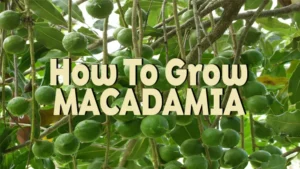

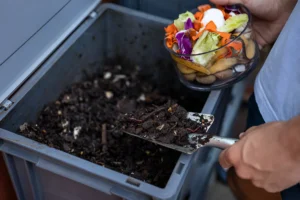


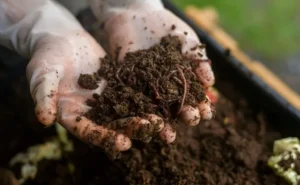
Leave your comment